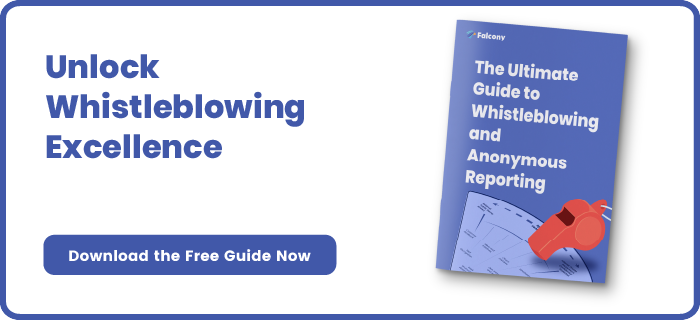Whistleblowing vs Internal Audit - How to use them in combination?
Whistleblowing and internal audits are essential components of an organization's governance and compliance framework. While they serve distinct purposes, integrating these two mechanisms effectively can enhance transparency, accountability, and the ability to address a wide range of issues.
In this blog, we will explore strategies on how organizations can use whistleblowing and internal audit processes in combination to create a powerful tool for maintaining a healthy and responsible corporate culture.
Establish Clear Reporting Channels
To use whistleblowing and internal audits in combination, organizations must establish clear and accessible reporting channels for employees and stakeholders. This includes:
- Whistleblowing Hotlines: Implement confidential and secure whistleblowing hotlines or reporting platforms where individuals can report concerns anonymously if desired.
- Internal Audit Access: Ensure that employees and stakeholders know how to contact the internal audit department and understand its role in addressing various types of issues.
Promote a Culture of Transparency
Fostering a culture of transparency is key to encouraging employees to come forward with concerns and ensuring effective collaboration between whistleblowing and internal audits. To promote transparency:
- Communicate Policies: Clearly communicate the organization's whistleblowing and internal audit policies, making them easily accessible to all stakeholders.
- Non-Retaliation Assurance: Assure employees that there will be no retaliation for reporting concerns in good faith, whether through whistleblowing or internal audits.
Coordination and Collaboration
Collaboration between the whistleblowing program and the internal audit department is essential for success. This involves:
- Sharing Information: Create a process for sharing relevant information between the two functions, ensuring that whistleblowing reports are appropriately channeled to the internal audit team.
- Cross-Training: Train internal audit staff on how to handle reports received through the whistleblowing mechanism, emphasizing the importance of confidentiality.
Conduct Comprehensive Audits
Internal audits should be designed to encompass not only financial and operational areas but also ethical and compliance concerns:
- Ethics Audits: Include ethics and compliance assessments in internal audits to proactively identify potential issues related to employee conduct and ethical standards.
- Whistleblower Tips: Pay special attention to any issues flagged through the whistleblowing mechanism during audits, addressing them promptly and thoroughly.
Investigate and Remediate
When issues are identified through whistleblowing or internal audits, organizations should follow a systematic process for investigation and remediation:
-
Prompt Investigations: Investigate all reports promptly, ensuring that both whistleblowing and internal audit findings are thoroughly examined.
-
Corrective Action: Implement corrective actions based on investigation outcomes, addressing root causes and preventing future occurrences.
Regular Reporting and Monitoring
Maintain transparency and accountability by regularly reporting on whistleblowing and internal audit activities:
- Reporting to Leadership: Provide regular reports to senior management and the board of directors on the outcomes of whistleblowing reports and internal audits.
- Continuous Improvement: Use data and insights from whistleblowing and internal audit activities to continuously improve organizational policies and procedures.
Conclusion
Whistleblowing and internal audits are powerful tools when used in combination to strengthen an organization's governance and compliance framework. By establishing clear reporting channels, promoting a culture of transparency, facilitating collaboration, conducting comprehensive audits, and implementing robust investigation and remediation processes, organizations can harness the strengths of both mechanisms to maintain a healthy and responsible corporate culture. This integrated approach helps identify and address a wide range of issues, mitigating risks and fostering trust among employees and stakeholders.
If you're looking to implement a mobile tool for whistleblowing, we've got you covered. Falcony | Whistleblowing is easy-to-use, fast to set up, has customisable workflows, vast integration possibilities and more. Contact us for more information.
We are building the world's first operational involvement platform. Our mission is to make the process of finding, sharing, fixing and learning from issues and observations as easy as thinking about them and as rewarding as being remembered for them.
By doing this, we are making work more meaningful for all parties involved.
More information at falcony.io.

Related posts
Whistleblowing vs Internal Audit - why you need them both?
Maintaining transparency, accountability, and ethical conduct within an organization is crucial for...
Whistleblowing and Internal Audit - Two Sides of the Same Coin
Whistleblowing and internal audit are often viewed as distinct processes with separate objectives....
Insider Tips to Improve Whistleblowing Programs
Whistleblowing programs play a crucial role in promoting transparency, accountability, and ethical...





